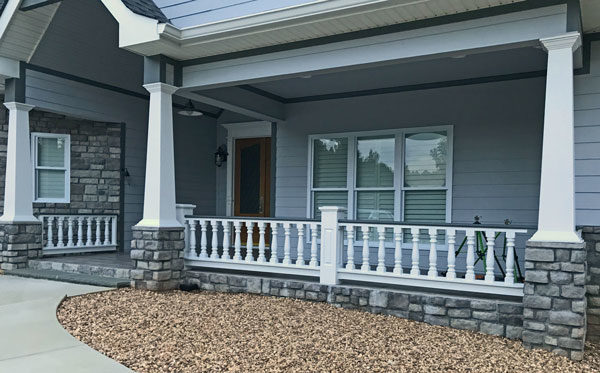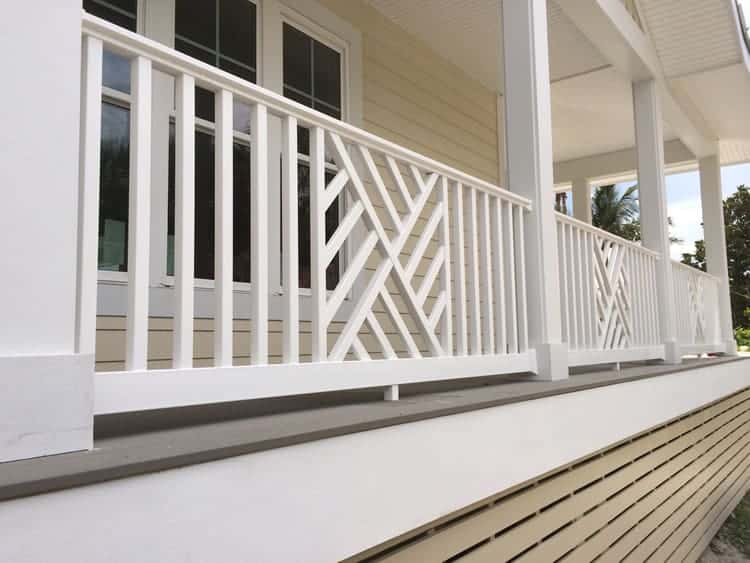Welcome to your ultimate guide on decorative porch railings. If you are looking to boost your home’s curb appeal while ensuring safety, these railings are a perfect blend of function and style. As a homeowner and an SEO expert, I’ve spent countless hours researching and experimenting with different types of railings, and I’m excited to share my insights with you!
Why Choose Decorative Porch Railings?
Decorative porch railings not only serve the primary purpose of safety but also act as a statement piece for your home. They can reflect your personal style, whether you prefer a classic look or a modern twist. Here are some compelling reasons to consider:
- Aesthetic Appeal: Decorative railings add charm and character to your porch.
- Safety: They provide a secure barrier, especially for homes with children and pets.
- Value Addition: High-quality railings can enhance the overall value of your property.
- Customization: Available in various materials, colors, and designs to suit every taste.
Types of Decorative Porch Railings

With a plethora of options available, choosing the right type of decorative porch railing can be overwhelming. Here’s a breakdown of popular types:
1. Wood Railings
Wood railings are classic and versatile. They offer a warm, natural look and can be painted or stained to match your home.

Pros and Cons of Wood Railings
| Pros | Cons |
|---|---|
| Natural beauty and warmth | Requires regular maintenance |
| Customizable | Vulnerable to rot and pest damage |
2. Vinyl Railings
Vinyl railings are low-maintenance and come in various styles. They mimic the look of wood but are much more durable.

Pros and Cons of Vinyl Railings
| Pros | Cons |
|---|---|
| Low maintenance | Can fade over time |
| Weather resistant | Limited color options compared to wood |
3. Metal Railings
Metal railings, including aluminum and wrought iron, add a contemporary touch and are incredibly durable.

Pros and Cons of Metal Railings
| Pros | Cons |
|---|---|
| Exceptional durability | Can be more expensive |
| Low maintenance | May rust if not treated properly |
4. Composite Railings
Composite railings combine wood and plastic fibers, offering the best of both worlds: aesthetic appeal and durability.

Pros and Cons of Composite Railings
| Pros | Cons |
|---|---|
| Low maintenance | Higher initial cost |
| Resistant to splintering and fading | Limited design options |
Choosing the Right Style for Your Home

When selecting decorative porch railings, consider your home’s architectural style. Here are some ideas:
- Traditional: Opt for classic wood railings with intricate balusters.
- Modern: Choose sleek metal railings with geometric designs.
- Farmhouse: Consider distressed wood or painted railings for a rustic feel.
- Coastal: Use white vinyl railings for a fresh, breezy look.
Installation Process
Installing decorative porch railings can be a rewarding DIY project if you’re handy. Here’s a quick overview of the installation process:
Step-by-Step Installation Guide
Materials Needed:
- Railings and posts
- Drill
- Level
- Measuring tape
- Brackets and screws
Installation Steps:
- Measure: Measure the length of the railing to determine how many posts and sections you need.
- Cut: If necessary, cut the railings to the correct size.
- Attach Posts: Secure the posts to the porch using brackets.
- Level: Ensure the railings are level before securing them in place.
- Finalize: Attach the top and bottom rails to the posts securely.
Remember to check local building codes to ensure compliance and safety!
Maintenance Tips for Decorative Porch Railings
To keep your decorative porch railings looking their best, regular maintenance is essential. Here are some tips:
- Wood Railings: Sand and stain or paint regularly to prevent rot.
- Vinyl Railings: Wash with soap and water to remove dirt and grime.
- Metal Railings: Inspect for rust and treat it immediately to prevent spreading.
- Composite Railings: Clean with a mild detergent and rinse with water.
Cost Considerations
The cost of decorative porch railings can vary significantly based on materials, style, and installation. Here’s a comparison table to give you an idea:
| Type of Railing | Price Range per Linear Foot | Installation Cost |
|---|---|---|
| Wood Railings | $15 – $30 | $40 – $70 |
| Vinyl Railings | $20 – $35 | $30 – $60 |
| Metal Railings | $30 – $60 | $50 – $100 |
| Composite Railings | $25 – $50 | $40 – $80 |
Frequently Asked Questions (FAQs)
1. What are the most popular materials for decorative porch railings?
The most common materials include wood, vinyl, metal, and composite. Each has its pros and cons, depending on your preferences and needs.
2. Can I install decorative railings myself?
Yes! With basic tools and some DIY skills, you can install them yourself. Just be sure to follow the manufacturer’s instructions and local building codes.
3. How do I maintain my decorative porch railings?
Maintenance depends on the material. Wood requires regular staining or painting, while vinyl and metal need occasional cleaning to prevent dirt buildup.
4. Are decorative railings safe for kids and pets?
Yes, decorative railings are designed to meet safety standards. Ensure they are installed correctly and checked regularly for stability.
5. How can I customize my porch railings?
Options for customization include color, design, and materials. Some manufacturers offer customizable panels or add-ons like caps and post covers.
Conclusion
Decorative porch railings can significantly transform your outdoor space, adding both beauty and safety. Whether you lean towards a classic wooden design or a modern metal finish, the right railings can elevate your home’s style. Remember that the choice of material, style, and maintenance will play pivotal roles in your satisfaction with the final product. Happy decorating!